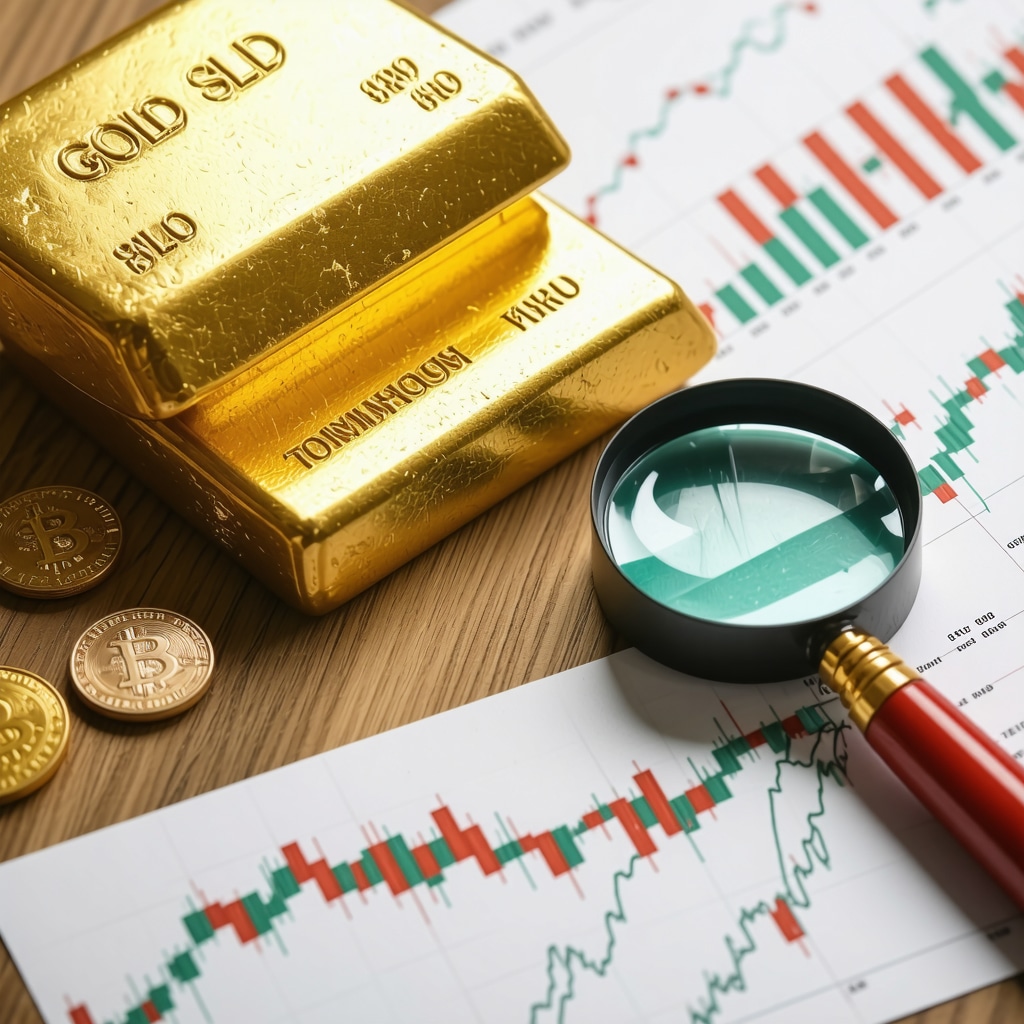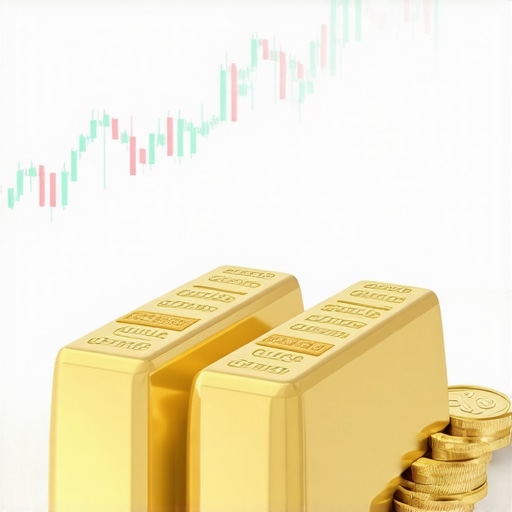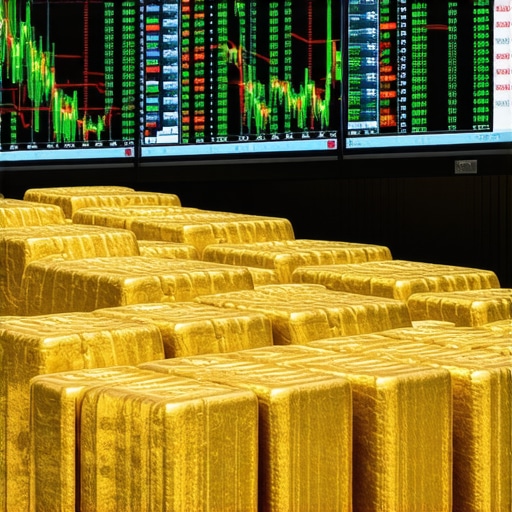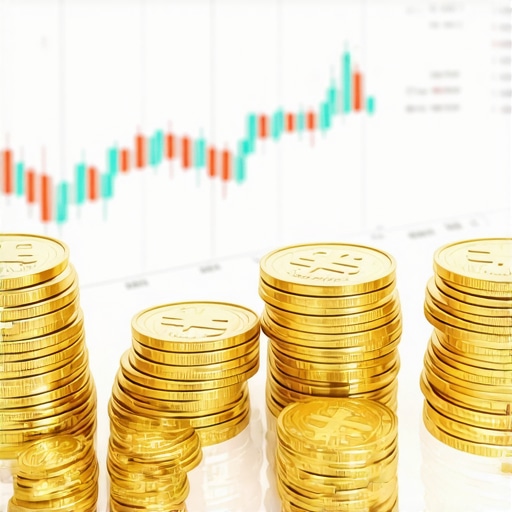Unlocking the Hidden Forces Behind Gold’s Market Movements
Investing in gold is often seen as a safe haven strategy, but truly smart investing demands a deeper understanding of the intricate interplay between gold supply and demand. The precious metal’s price fluctuations are not random; they are the result of complex, dynamic forces that savvy investors must decode. Delving beyond mere price charts, we explore how mining output, geopolitical shifts, investor sentiment, and industrial consumption collectively sculpt gold’s market landscape in 2029.
The Golden Equation: How Supply Constraints Shape Market Value
Gold supply primarily hinges on mining production and recycling. Mining output, influenced by ore grade, geopolitical stability, and operational costs, can be surprisingly inelastic in the short term. For instance, recent disruptions in key mining regions such as West Africa have tightened global supply chains, limiting new bullion availability despite rising demand. Additionally, the limited recycling rates amid soaring gold prices highlight a lag in supply responsiveness, intensifying scarcity effects.
Understanding these supply-side nuances is critical because they set a floor under prices. When mining yields falter or geopolitical tensions escalate, supply bottlenecks emerge, often propelling prices upward. This dynamic was notably evident during supply chain disturbances in 2020-2021, emphasizing the importance of monitoring mining sector reports and geopolitical developments to anticipate price movements.
Demand Drivers: Beyond Jewelry and Investment
Gold demand is multifaceted, extending far beyond traditional jewelry markets. Central banks worldwide have been aggressively increasing gold reserves as a hedge against currency volatility, with emerging economies like India and China playing pivotal roles. Furthermore, industrial demand — especially in electronics and medical devices — continues to grow, subtly but steadily adding upward pressure on consumption.
Investor demand also remains a powerful force. Exchange-traded funds (ETFs) and gold-backed IRAs have democratized access to gold investments, making it easier for retail investors to participate. These financial instruments react sensitively to macroeconomic indicators such as inflation rates, interest rate changes, and currency fluctuations, often triggering rapid inflows or outflows that affect spot prices.
How Can Investors Leverage Supply and Demand Insights for Smarter Gold Investments?
Grasping the supply-demand dynamics enables investors to anticipate price trends more accurately. For example, if mining reports forecast declining output while central banks announce increased purchases, these converging signals might foreshadow price rallies. Conversely, surging investor sell-offs amid stable supply could indicate temporary price corrections.
Practical application involves combining fundamental analysis with timely market intelligence. Investors should track authoritative sources such as the World Gold Council’s quarterly reports and monitor geopolitical developments closely. Moreover, diversifying gold investments across physical bullion, ETFs, and mining stocks can balance exposure to supply and demand shifts, optimizing portfolio resilience.
For deeper guidance on understanding gold demand trends and their effect on investment strategies, explore insights at Understanding Gold Demand Trends: What Investors Must Know.
Engage with us! Share your experiences or questions about gold supply and demand in the comments below to enrich this ongoing conversation.
Source: World Gold Council – Gold Market Research
Personal Reflections on Gold’s Role Amid Global Economic Shifts
Thinking back on my own journey with gold investments, one thing remains clear: gold’s allure isn’t just about the metal itself, but about what it represents in times of uncertainty. I remember during the turbulent economic periods, watching gold prices not just fluctuate, but respond to real-world events — not only the headlines but subtle shifts in supply chains and investor psychology. This personal experience has taught me that to truly master gold investing, one must develop a keen eye for the underlying forces driving these changes.
Why Understanding Market Sentiment Is Just As Crucial As Supply and Demand
Beyond the tangible factors like mining outputs or central bank reserves, market sentiment plays a surprisingly pivotal role. It’s fascinating how gold’s price can sometimes surge despite stable supply-demand fundamentals, driven by collective investor emotions such as fear or optimism. I’ve found that tuning into macroeconomic indicators, like inflation expectations or geopolitical risks, helps me gauge the mood of the market — a vital tool for timing entries and exits.
For instance, during the recent upticks in inflation, gold ETFs saw significant inflows as investors sought refuge, even before any major supply constraints tightened. This behavioral aspect is backed by research from the World Gold Council, which highlights how sentiment-driven demand can create rapid price movements independent of physical gold availability (source).
Could Your Investment Strategy Benefit from Balancing Physical Gold and Financial Instruments?
This question often comes up in my conversations with fellow investors. Based on my experience, combining physical gold holdings with financial products like ETFs or gold IRAs offers a compelling balance of security and liquidity. Physical gold provides a tangible asset shielded from counterparty risk, while ETFs offer ease of trading and portfolio diversification.
My own portfolio reflects this blend, where physical bars anchor my long-term wealth protection, complemented by tactical ETF positions that I adjust according to market conditions. If you’re curious about how to start or optimize such a strategy, resources like Top Gold IRA Benefits: Why You Should Invest in 2029 can provide practical insights.
Practical Tips: Staying Ahead with Real-Time Market Intelligence
One practical lesson I’ve learned is the value of staying informed with real-time data and trusted market analysis. I regularly track updates from reputable sources and combine them with my own observations to anticipate shifts. For example, watching mining production reports alongside geopolitical news can signal upcoming supply constraints before prices react.
Equally important is monitoring investor flows into ETFs and IRAs, which often serve as early indicators of changing sentiment. This blend of quantitative data and qualitative insight helps me make more confident investment decisions.
If you want to deepen your understanding of these dynamics, I highly recommend exploring detailed analyses such as those found in Understanding Gold Demand Trends: Insights for Smart Investing.
How about you? What has been your experience with balancing physical gold and financial gold products? Share your thoughts or questions in the comments below — I’d love to hear your stories and insights!
Decoding Market Sentiment: The Psychological Pulse Behind Gold Prices
In the intricate dance of gold prices, market sentiment acts as an invisible yet potent force that often amplifies or tempers the effects of tangible supply and demand metrics. Unlike traditional commodities, gold is uniquely sensitive to investor psychology because it serves both as a financial asset and a symbolic refuge. The subtle shifts in collective investor mood—driven by macroeconomic narratives, geopolitical tensions, or even social media trends—can precipitate rapid price swings that defy fundamental expectations.
For example, during periods of heightened geopolitical uncertainty, such as escalating conflicts or trade disputes, gold often experiences a “flight to safety” phenomenon. This behavioral surge in demand can inflate prices even if physical supply remains stable. Conversely, a sudden wave of optimism in equity markets might prompt investors to divest from gold, causing temporary price dips despite constrained supply.
Understanding these psychological undercurrents requires more than cursory news scanning; it demands integrating sentiment analytics tools, tracking key indicators like the Gold Sentiment Index (GSI), and monitoring ETF flow data to anticipate sentiment-driven price anomalies.
What Are the Most Effective Sentiment Indicators for Predicting Gold Price Movements?
Advanced investors employ a multifaceted approach to gauge market mood. The Gold Sentiment Index, which aggregates investor surveys, media sentiment, and macroeconomic forecasts, provides a composite sentiment score that correlates strongly with short-term price volatility. Additionally, tracking net inflows and outflows from major gold ETFs reveals real-time investor positioning shifts.
Sentiment indicators gain further robustness when combined with technical analysis patterns, such as Relative Strength Index (RSI) divergences or moving average crossovers, to validate potential reversals or continuations in gold price trends. This synthesis of quantitative sentiment data and chart-based signals equips investors with a nuanced toolkit for timing market entries and exits.
For a detailed exploration of sentiment-based strategies, see the insightful research by the World Gold Council on behavioral drivers of gold demand (source).
Integrating Supply Chain Analytics: Predicting Gold Market Shifts Before They Happen
Beyond sentiment, the granular analysis of gold supply chains—ranging from mining production forecasts to global recycling trends—enables predictive insights into market dynamics. Modern data analytics now allow investors to monitor ore grade fluctuations, energy costs impacting mining profitability, and geopolitical developments in key producing regions almost in real-time.
For instance, mining companies’ quarterly disclosures combined with satellite imagery and shipping data can reveal production bottlenecks or unexpected supply disruptions before they are widely reported. Similarly, understanding the elasticity of gold recycling in response to price movements helps anticipate secondary supply surges or shortages.
By integrating these supply chain analytics with demand-side intelligence, such as central bank purchase trends and industrial gold consumption forecasts, investors can construct sophisticated models that forecast price trajectories with higher confidence.
How Can Investors Harness Supply Chain Data to Gain a Competitive Edge in Gold Markets?
Investors looking to leverage supply chain analytics should consider subscribing to specialized market intelligence platforms that aggregate mining output data, geopolitical risk assessments, and recycling statistics. Applying machine learning algorithms to these datasets can uncover patterns and early warning signals indicative of imminent supply tightness or easing.
Moreover, cross-referencing supply chain insights with ETF flow data and market sentiment indicators creates a multi-dimensional view of gold’s market pulse. This holistic approach transforms reactive investment decisions into proactive strategies, enabling investors to capitalize on emerging trends before they manifest in price movements.
To deepen your understanding of these advanced analytics techniques, explore expert analyses such as Advanced Gold Market Analysis Strategies.
Crafting a Resilient Gold Portfolio: Balancing Physical Assets and Financial Instruments Amid Market Complexity
Given the multifactorial influences on gold prices, a resilient investment portfolio must blend tangible assets with liquid financial instruments to optimize risk-adjusted returns. Physical gold, encompassing bullion bars and coins, serves as a bulwark against systemic risks and counterparty failures. However, its illiquidity and storage costs necessitate complementing it with market-responsive vehicles like ETFs, gold futures, and gold-backed IRAs.
This hybrid approach allows investors to tactically adjust exposure according to evolving market conditions—boosting liquidity during periods of heightened volatility and anchoring wealth preservation when markets turn turbulent. Additionally, selective investment in mining equities provides leveraged exposure to gold price appreciation but requires careful assessment of operational risks and geopolitical factors affecting mining jurisdictions.
In constructing such portfolios, investors should employ rigorous due diligence, including scenario analysis and stress testing, to anticipate performance under diverse economic environments.
Are you interested in a personalized strategy that integrates physical and financial gold assets? Engage with our expert consultations to tailor your portfolio for 2029’s complex gold market landscape.
Harnessing Cutting-Edge Analytics to Anticipate Gold Market Volatility
In the evolving landscape of gold investment, traditional analysis is no longer sufficient to capture the nuanced forces driving price movements. Sophisticated investors now integrate real-time supply chain data with sentiment analytics to create predictive models that anticipate market shifts before they materialize. This approach involves dissecting mining output fluctuations, global recycling responsiveness, and geopolitical risk patterns alongside investor behavior metrics, thereby constructing a multidimensional perspective on gold’s trajectory.
Sentiment Indicators: The Expert’s Compass in Navigating Market Psychology
Market sentiment, often dismissed as intangible, can decisively steer gold prices through waves of collective investor emotion. Tools like the Gold Sentiment Index (GSI), which synthesizes investor surveys, macroeconomic forecasts, and media tone, provide a quantitative backbone to this otherwise elusive factor. Additionally, monitoring ETF inflows and outflows offers real-time insight into market positioning, enabling investors to anticipate momentum shifts. Combining these sentiment indicators with technical analysis—such as RSI divergences and moving average crossovers—amplifies predictive accuracy.
What Are the Most Effective Sentiment Indicators for Predicting Gold Price Movements?
Advanced market participants deploy a blend of sentiment metrics to decode price dynamics. The GSI stands out as a composite measure capturing prevailing investor mood, complemented by granular ETF flow data that reveals active positioning. When these indicators align with corroborative technical signals, they provide a robust framework for anticipating reversals or trend continuations. For comprehensive behavioral insights, the World Gold Council’s research on behavioral drivers of gold demand is an authoritative resource.
Integrating Supply Chain Intelligence: A Proactive Approach to Market Forecasting
Beyond sentiment, the granular examination of gold’s supply chain offers a strategic advantage. Investors exploiting mining production reports, satellite surveillance, and shipping logistics can detect emerging supply constraints or surges ahead of market consensus. Coupling these insights with data on central bank acquisitions and industrial consumption enhances the precision of price projections. Machine learning algorithms applied to these diverse datasets can further unearth subtle patterns, transforming raw data into actionable intelligence.
Strategic Portfolio Construction: Balancing Tangible Assets and Dynamic Financial Instruments
Given the complexity of gold’s market drivers, crafting a resilient portfolio demands a nuanced blend of physical holdings and liquid financial products. Physical gold remains indispensable for risk mitigation against systemic disruptions, yet its limited liquidity necessitates supplementing with ETFs, futures, and gold-backed IRAs for tactical flexibility. Incorporating mining equities adds leveraged exposure but requires vigilant risk assessment. Employing rigorous scenario analyses and stress testing ensures portfolio robustness across varying economic climates.
For investors ready to elevate their gold strategy with these advanced insights, personalized consultation services are available to tailor asset allocation to your unique objectives in 2029’s intricate market environment.
Source: World Gold Council – Behavioral Drivers of Gold Demand
Ready to transform your gold investment approach with cutting-edge analytics and expert sentiment tracking? Engage with our team today to unlock bespoke strategies tailored for the complexities of 2029.
Frequently Asked Questions (FAQ)
What factors primarily influence gold supply in the global market?
Gold supply is predominantly affected by mining production levels and recycling rates. Mining output depends on ore grades, geopolitical stability in key regions, and operational costs. Recycling adds secondary supply but tends to respond slowly to price changes. Supply chain disruptions or geopolitical tensions can significantly constrain availability, pushing prices higher.
How does central bank activity impact gold demand?
Central banks actively manage gold reserves as part of their monetary policy and currency risk hedging strategies. Increased purchases by emerging economies such as China and India bolster demand, often signaling concerns over currency volatility or inflation. These activities can create sustained upward pressure on gold prices by tightening market availability.
Why is market sentiment crucial in understanding gold price movements?
Market sentiment reflects collective investor psychology and can amplify or dampen price trends independent of physical supply and demand. Fear, uncertainty, or optimism driven by macroeconomic indicators or geopolitical events often trigger rapid inflows or outflows in gold ETFs and other financial instruments, causing volatility that may not align with fundamental factors.
What are the best tools to gauge gold market sentiment?
Effective sentiment assessment combines indicators such as the Gold Sentiment Index (GSI), ETF inflow and outflow data, and media tone analysis. When paired with technical analysis—like Relative Strength Index (RSI) divergences and moving average crossovers—these tools help predict potential price reversals or continuations with greater accuracy.
How can supply chain analytics provide a competitive edge in gold investing?
Supply chain analytics involve monitoring mining production forecasts, geopolitical risks, recycling trends, and logistics data. Advanced methods such as satellite imagery and machine learning enable early detection of supply constraints or surges. Integrating this intelligence with demand-side data allows investors to anticipate price movements proactively rather than reactively.
Is it better to invest in physical gold or gold-related financial instruments?
A balanced portfolio combining physical gold (bullion, coins) and financial instruments (ETFs, IRAs, futures) optimizes risk management and liquidity. Physical gold offers tangible security against systemic risks but lacks liquidity, while financial products enable flexible trading and diversification. Strategic allocation depends on individual risk tolerance, investment horizon, and market conditions.
How do geopolitical events influence gold prices?
Geopolitical tensions often trigger a ‘flight to safety,’ increasing gold demand as a risk hedge. Conflicts, trade disputes, or political instability can disrupt mining operations or supply chains, further tightening supply. These factors combined tend to elevate gold prices, sometimes irrespective of other fundamentals.
Can technological advances in mining affect gold supply significantly?
Technological progress can improve mining efficiency, reduce costs, and access lower-grade ores, potentially increasing supply. However, such developments typically manifest over longer time horizons and are moderated by environmental regulations and geopolitical factors, limiting short-term supply elasticity.
How do inflation and interest rates relate to gold investment strategies?
Gold often serves as an inflation hedge; rising inflation can increase gold demand as real returns on fixed income decline. Conversely, higher interest rates increase opportunity costs of holding non-yielding assets like gold, potentially dampening demand. Investors monitor these macroeconomic variables closely to adjust their exposure.
What role do mining equities play in a diversified gold portfolio?
Mining stocks provide leveraged exposure to gold price movements but carry additional risks, including operational challenges and geopolitical exposure. Including mining equities can enhance portfolio returns during price upswings but requires rigorous due diligence and risk management to mitigate potential volatility.
Trusted External Sources
- World Gold Council – A leading authority providing comprehensive research on gold supply-demand fundamentals, behavioral drivers, and market trends. Their detailed reports and data sets offer invaluable insights for investors seeking to understand gold’s multifaceted market dynamics.
- International Council on Mining and Metals (ICMM) – Offers in-depth analyses of mining production, sustainability practices, and geopolitical risks affecting mineral supply chains, essential for evaluating supply-side factors in gold markets.
- Metals Focus – A specialized consultancy delivering independent research on precious metals supply, demand, and recycling trends, supporting advanced analytics and forecasting models for gold investors.
- Bloomberg Terminal – Commodity Analytics – Provides real-time market data, sentiment indicators, ETF flows, and technical analysis tools crucial for monitoring gold price drivers and investor positioning.
- International Monetary Fund (IMF) – Supplies authoritative data on central bank gold reserves and global economic indicators that influence gold demand and investment strategies.
Conclusion: Navigating Gold Markets with In-Depth Supply and Demand Mastery
In 2029, gold investing demands more than surface-level understanding; it requires an expert grasp of the intricate balance between supply constraints, multifaceted demand sources, and the powerful undercurrents of market sentiment. Mining production complexities, central bank activities, industrial consumption, and investor psychology converge to shape gold’s price trajectory. Employing advanced analytics—from supply chain intelligence to sentiment indicators—empowers investors to anticipate market shifts proactively.
Crafting a resilient gold portfolio involves harmonizing the tangible security of physical bullion with the agility of financial instruments, while continuously monitoring geopolitical and macroeconomic developments. This sophisticated approach transforms gold investing from speculative guessing into strategic decision-making, positioning investors to capitalize on emerging trends and safeguard wealth amid uncertainty.
Ready to elevate your gold investment strategy? Share your insights, ask questions, and explore our in-depth resources to master the complexities of gold supply and demand in 2029 and beyond.











The discussion on how geopolitical tensions in key mining regions like West Africa can dramatically influence gold supply really stood out to me. I’ve noticed in my own investing experience that these supply chain uncertainties often catch many investors off guard, leading to rapid price movements that aren’t immediately explained by visible market factors. What fascinates me is the lag in the supply response from recycling despite soaring prices—it highlights a structural rigidity in the market that amplifies scarcity effects during times of high demand or constrained production.
Additionally, the role central banks play, especially those in emerging economies, adds a layer of strategic demand that isn’t just transactional but tied to macroeconomic policy and currency stability concerns. For individual investors, this means that beyond tracking mining reports, understanding global economic policies and geopolitical developments becomes crucial.
In managing my portfolio, I’ve found diversifying between physical gold for long-term security and gold ETFs for tactical liquidity helps balance these unpredictable elements. I’m curious how other readers monitor these geopolitical and supply dynamics effectively—do you rely more on real-time news, specialized analytics platforms, or perhaps sentiment indices? Also, what strategies do you adopt to counteract the lag in recycling supply responsiveness during price surges? It seems like anticipating these shifts early can offer significant advantages in navigating gold markets today.
Your insights on the importance of market sentiment in gold investing really resonate with my experiences. During periods of geopolitical uncertainty, I’ve noticed that even without major supply disruptions, gold prices can spike unexpectedly, driven by collective investor anxiety. Tools like the Gold Sentiment Index (GSI) have been instrumental for me in gauging the mood of the market, especially when headline news or social media trends amplify fears or optimism.
What I find particularly challenging is balancing emotional reactions—sometimes market sentiment can overreact, leading to short-term volatility that might not reflect the underlying fundamentals. Do you or others here rely on specific technical indicators like RSI or moving averages to confirm whether a sentiment-driven move is likely to reverse or continue?
Additionally, integrating sentiment data with supply chain analytics seems to be a promising approach for a more holistic view. For instance, if sentiment is bullish but supply chain indicators signal potential disruptions, it could be a signal to prepare for a near-term rally before it overheats. How do you all weigh these different types of signals when making investment decisions? It seems that combining behavioral and fundamental data could be the key to staying ahead in the complex gold market.
Reading through this article really highlights how interconnected the supply and demand factors are in shaping gold prices, especially in a complex market like 2029. I’ve personally observed how geopolitical tensions in regions like West Africa can cause sharp and swift movements in gold, often catching investors off guard. What stands out to me is the importance of not only monitoring official reports but also understanding the latent effects—such as the lag in recycling supply—that can magnify price swings.
I’ve found that supplementing traditional analysis with real-time geopolitical news and alternative data sources like satellite imagery has been useful in anticipating supply disruptions before they become widely apparent. For those investing in gold, what tools or platforms do you find most effective for staying ahead of these hidden forces—particularly in terms of geopolitical risk assessment and supply chain insights? Moreover, how do you balance the long-term security of physical gold against the liquidity advantages of ETFs amid such unpredictable dynamics? I’d love to hear others’ strategies for navigating this intricate landscape.